Guest blogger: Dr Anastasia Dukova - 2018 Q ANZAC 100 Fellow.
Thomas McGillycuddy, the youngest of five children, was born in 1891 in the small townland of Carhoobeg, County Kerry to Irish and English-speaking parents, Margaret and Timothy. (Ireland, Civil Registration Births Index, 1864-1958, Vol 5, p. 257) The McGillycuddies were a Roman Catholic family and lived on a farmstead, which in addition to the three-room main house had a stable, cow and calf houses, a dairy, a piggery and a barn. At 19 Thomas was living in his parents’ house and working on the family farm. (Census of Ireland, 1911).
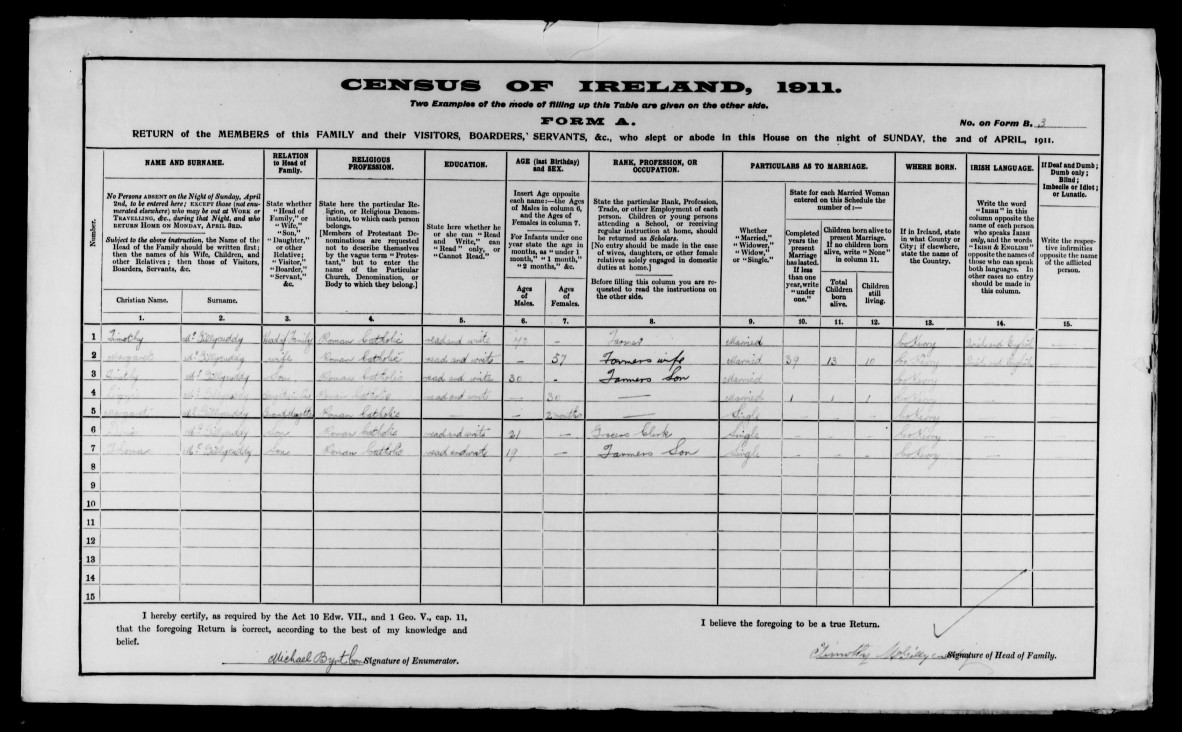
In March 1913, Thomas arrived in Sydney on Westralia. (New South Wales, Australia, Unassisted Immigrant Passenger Lists, 1826-1922) A few months later, he applied to join the Queensland Police Force. On 30 September 1913, Supernumerary McGillycuddy, described as 5 feet and 9 inches tall, of ruddy complexion with brown hair and brown eyes, was sworn in into the Queensland Police Force (Registration Number 1784). In October 1914, Constable McGillycuddy was transferred to Bundaberg. (Register of Members of the Queensland Police, 1895-1917 and 1879-1924)
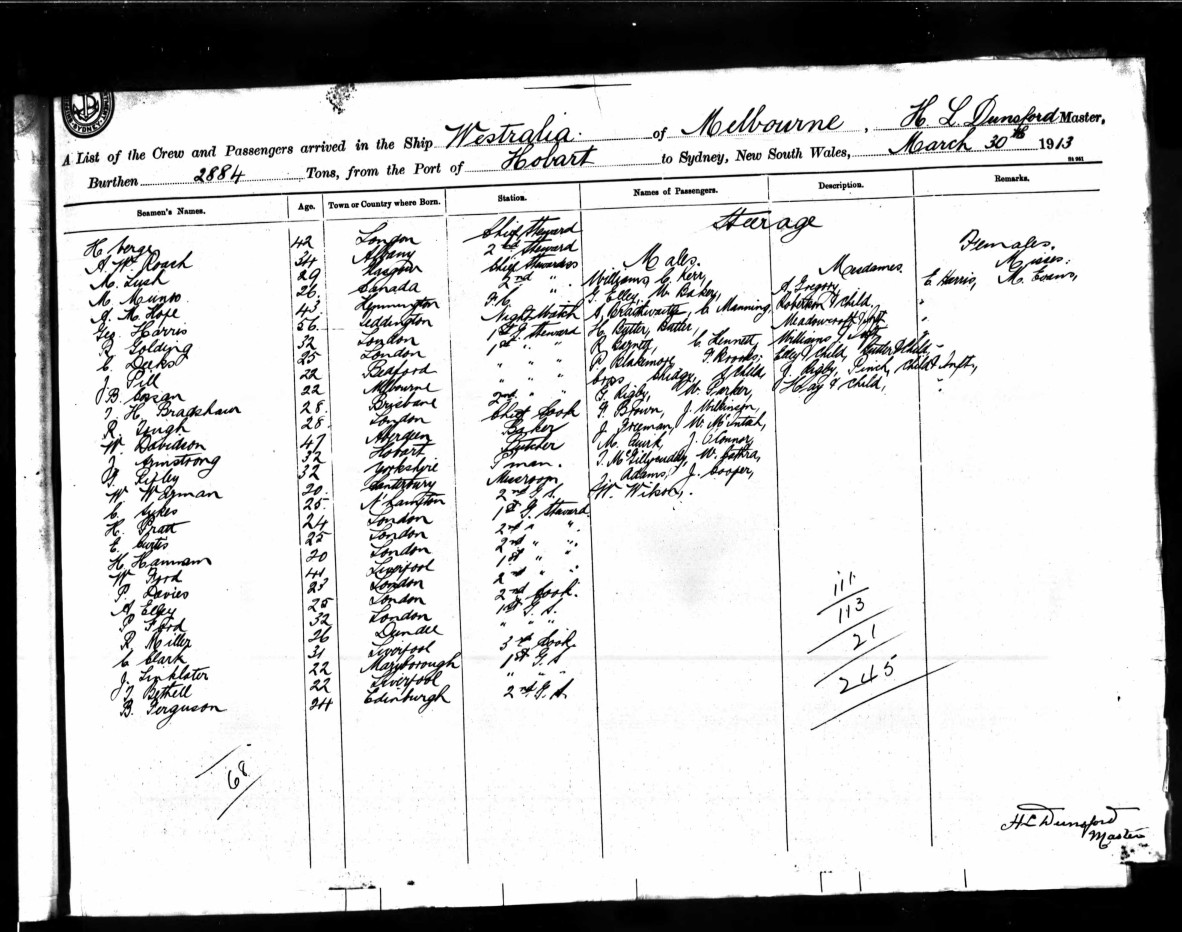
T McGillycuddy, New South Wales, Australia, Unassisted Immigrant Passenger Lists, 1826-1922
In August 1915, after barely two years in the service, McGillycuddy enlisted with the Australian Imperial Force (AIF), 45th Battalion (initially 47th). Aged 24, he embarked on HMT Minnewaska and left for Gallipoli. (NAA B2455) Following over four months of training near Cairo, Australian troops departed by ship for the Gallipoli peninsula. They landed at what became known as Anzac Cove on 25 April 1915 and established a tenuous foothold on the steep slopes above the beach. Thomas was one of few ANZACs to have survived the disastrous campaign; 8709 men were killed during the Gallipoli Campaign, between 25 April 1915 and 8 January 1916 (AWM).
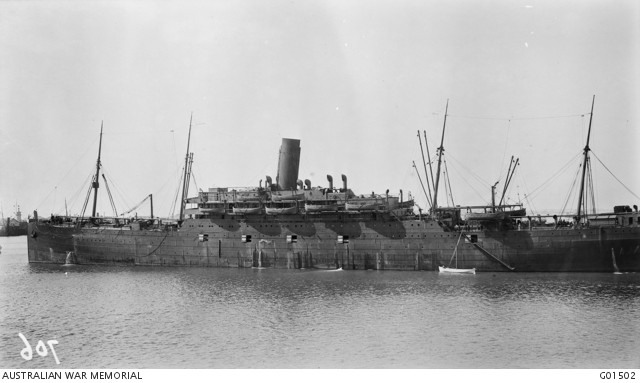
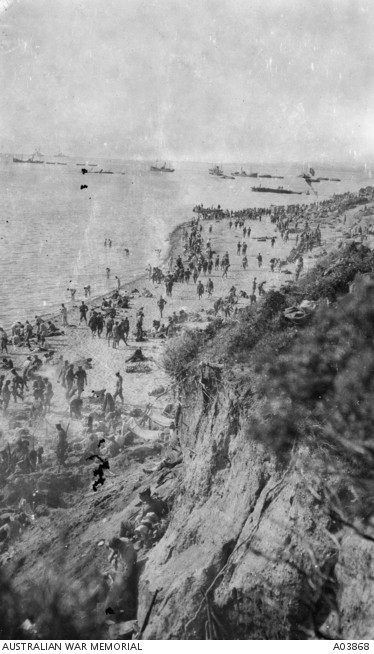
Ottoman Empire, Turkey, Dardanelles, Gallipoli, Anzac Area (Gallipoli), Anzac Beaches Area, Anzac Beach. AWM A03868
In November, Thomas was assigned to 15th Battalion. On Christmas Day 1915, he disembarked HT Ionian as an ex-ANZAC at Alexandria. Three months later, he was transferred to the 47th, AIF. In June 1916, McGillycuddy proceeded to join the British Expeditionary Forces (BEF), arriving in Marseille on Caledonia later that month. Throughout 1916-17, Thomas sustained a number of serious injuries on the Western Front. In August 1916, he was severely wounded in action by a shrapnel in his left hip and right foot and had to be transferred to Dublin for treatment. In September, Thomas was discharged to duty from the Central Military Hospital in Cork, then to the Australian Command Depot No 1, Perham Downs, UK. The next day he was granted a furlough for a fortnight.
In mid-1917, McGillycuddy was back in France where he was shot again and wounded in the left arm. Having passed through the casualty station, Thomas was eventually admitted to General Hospital in Rouen, Normandy, France. In October 1917, upon his release from the hospital he joined a Depot at Le Havre, Normandy. There, he was charged with being out of bounds in a town without a pass. (NAA B2455) He was sentenced to 14 days Field Punishment No 2 by the Commanding Officer for the offence. A court-martial, or a commanding officer, awarded field punishment for any offence committed on active service, and could sentence an offender for a period not exceeding, in the case of a court-martial three months, and in the case of a commanding officer 28 days to either Field Punishment No 1 or No 2. Field punishment No. 1 consisted of heavy labouring duties, being restrained in handcuffs or fetters, and being tied to a post or wheel. Field punishment No. 2 differed in that the offender was not liable to be attached to a fixed object.
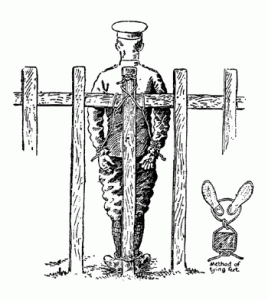
Illustration of method of attachment to fixed object as required in Field Punishment no 1 (War Office, London, 1917) (Source: AWM25 807/1)
He returned to the front on 14th November at Peronne where the Battalion was being held in reserve. Next came two stints holding the line at Hollebeke before he was granted two weeks leave. On his return, the 47th Battalion was disbanded due to the depletion of the Battalion as a fighting unit because of the casualties. McGillicuddy was absorbed into the 45th Battalion and detached to the 12th Light Trench Mortar Battery. - Paul Ruge, Their Glory Shall not be Blotted Out, 2006.
McGillycuddy was granted a month-long leave to the UK, between March and April 1918. In May, he was taken on strength with the 45th Battalion in France. Six weeks later, Thomas McGillycuddy was killed in action during the Battle of Hamel, just four months and three days before the Armistice.
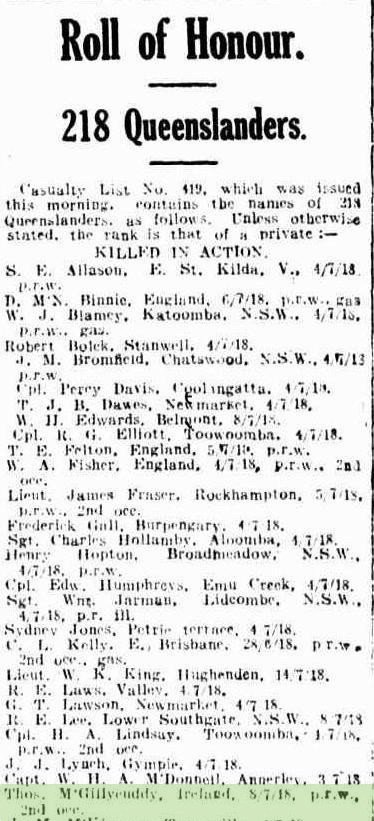
Roll of Honour, 218 Queenslanders, Telegraph, 26 July 1918, p. 6.
Thomas is buried at Villers-Bretonneux, Departement de la Somme, Picardie, France.
Further reading from Dr Anastasia Dukova
Event - 2018 Q ANZAC 100 Fellows: Under the skin 4On 29 March 2019, follow the progress of the 2018 Q ANZAC 100: Memories for a New Generation Fellows Elaine Acworth, Dr Anastasia Dukova, Dr Martin Kerby and Deborah Terranova as they bring to life memories and experiences of Queenslanders during the war. Bookings are essential.
Comments
Your email address will not be published.
We welcome relevant, respectful comments.